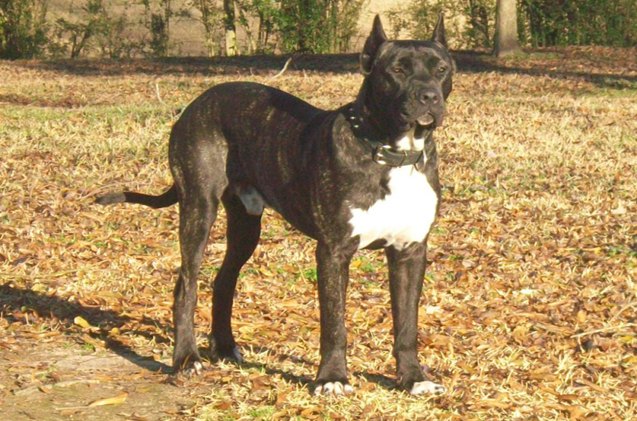Should A Breeder Be Allowed to Manipulate Genes in Order to Eradicate

David Ishee is an ordinary man who lives in rural Mississippi. When he discusses what he wants to do with genetic editing of the Mastiff he breeds, you’d think he was in a sterile lab with a white coat and a few fancy science degrees. Nope — Ishee began breeding Mastiffs a few years ago after a break-in to his house left him hunting for a guard dog that was good with family members.
Ishee claims that mastiffs were once a warrior breed, but years of poor inbreeding and genetic disease have produced lazy, unenergetic show dogs of today. Ishee says that as a breeder, he wants to bring back their drive and athleticism, but most importantly, their health. Breeding has left many dog breeds with limited gene pools, which translates into a lack genetic diversity. This is the cause of serious diseases such as brachycephaly in bulldogs and hyperuricemia in dalmatians.
Related: Study: Chiari Malformation Can Be Reduced With Cross-Breeding
Several years ago, Ishee saw a TED talk on genetic engineering, and decided to look into whether it could play a part in breeding out disease and breeding in health in his mastiffs. That’s when he began research into Clustered Regularly Interspaced Short Palindromic Repeats (CRISPR) in his self-built, backyard lab. Now, Ishee’s mastiffs are currently are what the warrior dogs of old were. His dogs are 150-170 pounds, 30+ inches at the shoulders, tight-skinned, dry-mouthed, and most importantly to him, free of inherited diseases that often plague the breed.
Ishee says that basically, every breeder would like what he does but thinks it’s expensive or difficult. He said that today, ordering custom synthesized DNA is inexpensive and easy, and that one can watch videos to learn how to splice genes.
And this is why the Federal Drug Administration is stepping in. The FDA believes that there could be potentially significant health benefits for both humans and animals alike, but they are concerned that lack of regulation could also bring about unwanted impacts to all involved. As a result, in mid-January, the FDA revised its guidance for animals who are produced with edited genomes, and classify such animals as veterinary drugs.
Related: Research Finds Unlikely Dog Breeds Carry Genes for Genetic Disorders
Ishee’s next CRISPR project was to rid of hyperuricemia in dalmatians, but this newest FDA revision now leaves him subject to a rigorous process of permission and approvals, not to mention cost, and for a small breeder, that’s not feasible. Ishee is conflicted–CRISPR basically allows breeders to do what they’ve always done only in a faster, even easier way. But he also recognizes that those with mal intentions could abuse the technology he only wants to use for helping all dogs everywhere, and so, he understands the need for guidance. He fears, however, that it will be created without taking the growing number of breeders and genetic enthusiasts like himself into account, and making the process so impossible to navigate through, good will be lost.
Ishee can continue his experimentation in his ‘lab,’ but under the FDA guidance, if he were to create a disease-free dog, sharing his results may subject him to criminal penalties. He hopes that more thought and consideration to the good that can be done with genetic modification will be put into continued guidance, instead of just trying to control who can use the technology based on how much money and time they have.

More by Lori Ennis























